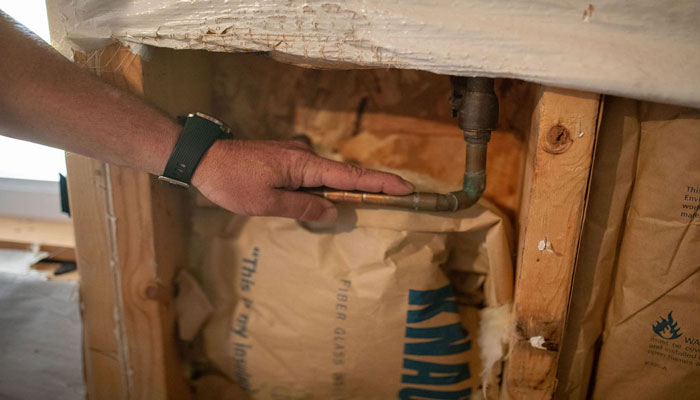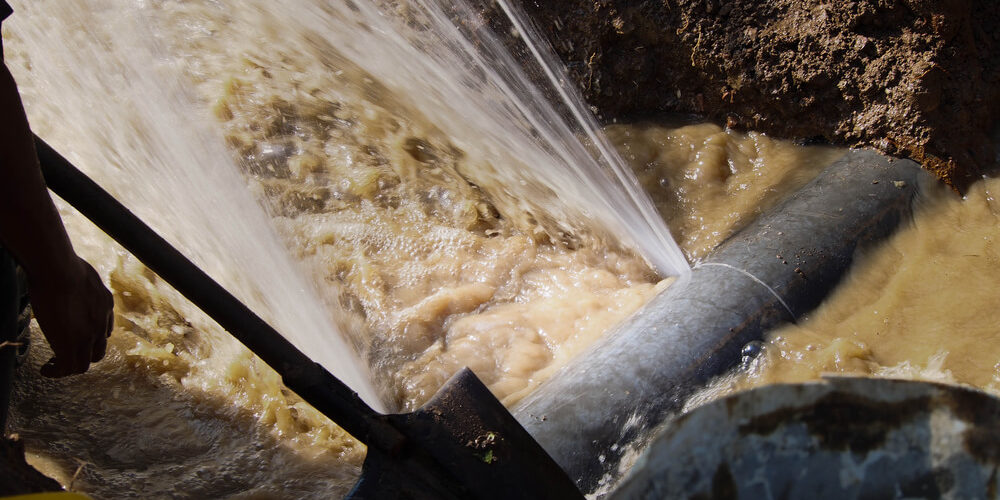From Detection to Correction: A Fast Approach to Handling Burst Pipes
From Detection to Correction: A Fast Approach to Handling Burst Pipes
Blog Article
We have discovered this post pertaining to How to Install and Connect a New Dishwasher down the page on the internet and figured it made good sense to relate it with you here.

A burst pipeline is a significant emergency; you can just stand as you enjoy water you pay very much to reunite with the earth. In even worse instances, you notice a pool on your kitchen area flooring, which is a great trip danger, especially if you have kids around. If the pipe that ruptured remained in your walls, bad news: you may require to repaint that entire area.
How can a catastrophe like a ruptured pipe be stopped and also managed? Well, by listening to your expert emergency plumbing technicians and following these policies.
How do I recognize when my pipes have ruptured?
Varying water pressures
Pipelines do not just burst in a day. You might have noticed that your kitchen area tap or shower does not run quickly when you transform the faucet. It may stop for a few seconds and afterwards blast you with even more pressure than common.
In various other instances, the water may seem typical initially, then drop in pressure after a few seconds.
Wet walls and also water discolorations
Before a pipeline ruptureds, it will certainly leakage, most times. If this persistent dripping goes undetected, the leakage may finish into a vast gouge in your pipeline. One very easy method to prevent this emergency is to look out for wet wall surfaces ad water spots. These water discolorations will lead you right to the leakage.
Puddles under pipelines as well as sinks
When a pipe ruptureds, the discharge forms a pool. It may show up that the puddle is expanding in size, and despite the number of times you mop the pool, in a couple of minutes, there's another one waiting to be cleansed. Typically, you may not have the ability to trace the pool to any type of noticeable pipelines. This is an indication to call a professional plumber.
Untraceable dripping sounds
Pipeline ruptureds can occur in the most unpleasant places, like within concrete, inside walls, or under sinks. When your home goes silent, you may be able to listen to an aggravatingly relentless dripping noise. Also after you've inspected your shower head as well as cooking area tap, the trickling may continue.
Dear viewers, the trickling might be coming from a pipe inside your walls. There isn't much you can do regarding that, except tell an expert plumber.
Turn off the Water
When water freezes, it expands in quantity by about 9 percent. And also it broadens with incredible pressure: The pressure inside pipelines might go from 40 extra pounds per square inch to 40,000 psi! No pipe can hold that much pressure, so it breaks open. The break might happen where the ice kinds, however more often, it happens where water pressure discovers a vulnerable point in the pipeline. That may be inches or perhaps feet from the icy location. Find the water shutoff valve and also shut off the water to avoid more damage. You may likewise require to shut down the electricity too, depending on where the leakages takes place and also exactly how huge it is.
Contaminated water
Many people assume a burst pipe is a one-way outlet. Fairly the contrary. As water flows out of the hole or gash in your plumbing system, contaminants locate their way in.
Your water might be infected from the resource, so if you can, examine if your water container has any type of problems. However, if your drinking water is supplied and cleansed by the city government, you should call your plumber instantly if you see or smell anything amusing in your water.
What do I do when I spot a burst pipeline?
Your water meter will certainly remain to run even while your water wastes. To minimize your losses, locate the major controls and also turn the supply off. The water pipe are an above-ground framework at the edge of your property.
How to Fix & Detect a Leaking Pipe
How Do I Know if a Pipe is Leaking?
Leak detection tests can help you determine if your pipe has a leak. Even if you don’t see an apparent leak, you should still conduct leak detection tests regularly to save water and money—and prevent major damage to your home.
Water meter. It can be helpful to figure out what your usual water meter usage numbers are and then monitor them regularly. To monitor your meter, first, turn off all water faucets in your home. Check the meter and write down the numbers. In a few hours, check the meter again. If the numbers have changed, you have a leak. Water gauge. Use a water gauge to test your water pressure. Your showerhead should produce a certain amount of water pressure based on its model and design. If the pressure is lower than it is supposed to be for that specific showerhead, your home likely has a leak. Puddles. Look inside your bathroom, laundry, and kitchen sink cabinets. Puddles around the cabinets or around toilets, tubs, showers, and washing machines indicate the presence of a leaking pipe. You may also notice loose tiles, peeling or flaking paint, or mold caused by water accumulation. Napkin test. Even if you don’t see any puddles, you may still have a leak. You can test for water leaks in the bathroom, laundry, and kitchen by wiping below-sink connections with a napkin, paper towel, or piece of toilet paper. If it becomes damp, you probably have a leaking pipe under the sink. Discolored walls. Walls that are discolored—usually with brown or yellow stains—or bulging might mean that they have been impacted by water damage caused by a leaking pipe. Smell. A leaky pipe will create sitting water, and over time, that water may develop a musty smell. If your home smells musty, but you can’t locate the source, it may be due to a leak. Steps for Fixing a Leaking Pipe
A leaky drain can be remedied by tightening the pipe base, replacing the drain seal, caulking the rim, and tightening the pipe nut. Similarly, a leaking toilet pipe can be treated by tightening the packing nut. You may also need to replace the valve. A leaky faucet may just need tightening or replacement of the washers. If that doesn’t work, consider replacing your faucet. If your pipe has a hole in it, you may want to use a pipe leak sealer or pipe leak tape. This quick fix for water pipe leaks can also temporarily fix a copper pipe leak. https://www.ahs.com/home-matters/quick-tips/how-to-tell-if-pipes-are-leaking/

We hope you enjoyed reading our post about How to Install and Connect a New Dishwasher. Thanks a lot for spending some time to read our post. Please take a moment to share this page if you appreciated it. Bless you for your time. Visit us again soon.
Start Now
Report this page